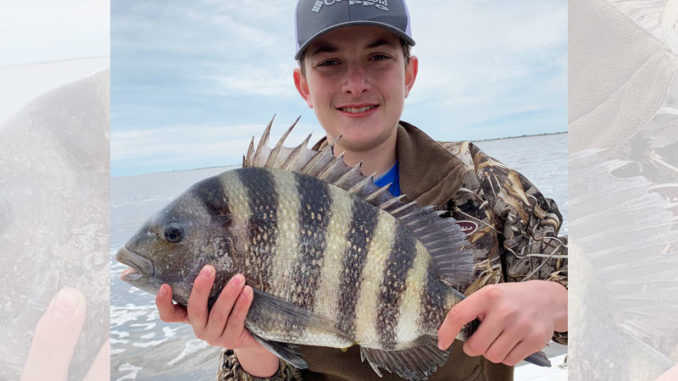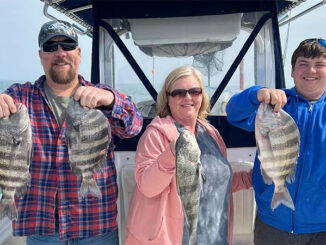
Spring is prime time for convict fish
By May, the spring bite in saltwater offers South Carolina anglers plenty of options. Those looking for a cooler full of sheepshead can’t go wrong on a trip to the rock jetties outside Winyah Bay.
The jetties that armor the flow downstream from Georgetown, S.C., hold numbers of sheepshead, and spring is a killer time to keep the lines stretched.
Catching sheepshead is nothing new for Dan Connolly of O-Fish-Al Expeditions. Based out of Murrells Inlet, S.C., Connolly routinely fishes the waters of Murrells Inlet and Georgetown for speckled trout, flounder, redfish and sheepshead, aka the king of the rocks.
“Sheepshead are at our jetties year-round, but spring is prime time,” said Connelly (843-241-7022). “Some stay all winter at the jetties, and others are just returning after spawning at the reefs.”
Connolly will fish both the Winyah Bay and Murrells Inlet jetties, but the volume of structure at WInyah Bay can hold more fish than anywhere else.
“At Murrells Inlet, we have a strong sheepshead population, but Georgetown can be more productive, with bigger fish at times. There are more rocks and deeper water that can hold more fish,” he said.
Chumming will bring the sheepshead in
One of Connolly’s tried-and-true techniques involves a five-gallon bucket of chum.
“I spend an hour collecting barnacles, oysters or the tiny mussels that grow together on structure. You can get them corralled under your boat about any time with chum,” he said.
Connolly chooses places along the jetties with light current and water that is at least 10 feet deep. Whether he finds an eddy or is fishing on the outside of the rocks, the light current allows the chum to bring the fish to him. He positions his boat near the rocks with his trolling motor and fishes vertically.
Preferred foods are china-back fiddler crabs, available at most bait shops. Connelly uses a standard Carolina rig with a ½- to ¾-ounce egg sinker, a short, 1-foot leader, and a 2/0 to 3/0 strong bait hook.
After tossing a few scoops of chum into the water, Connelly will drop his bait vertically to the bottom and make a couple of cranks to keep the bait just off the rocks with a tight line. And this is when the magic happens.
“You rarely will feel a sheepshead bite. So I slowly raise and lower the line 6 inches, and if I feel any resistance at all, I immediately set the hook. And then you hold on!” he said.


